Dateline: 1.21.1
So, you want to build yourself a Maco Corvette? Get your work clothes!
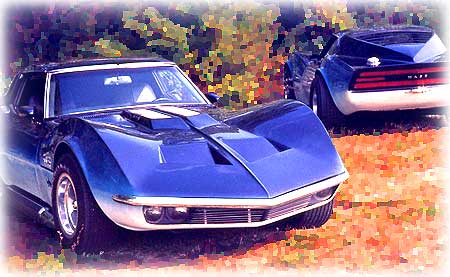 We were very pleased with the response to our Mako Shark Attack Week from the beginning of January 2012. I first saw the Mako Shark-II back in ‘66 and thought it was the most stunning car I’d ever seen. It looked like what I had imagined “cars from the future” would look like. Obviously, I wasn’t the only one that was touched, moved, and inspired.
We were very pleased with the response to our Mako Shark Attack Week from the beginning of January 2012. I first saw the Mako Shark-II back in ‘66 and thought it was the most stunning car I’d ever seen. It looked like what I had imagined “cars from the future” would look like. Obviously, I wasn’t the only one that was touched, moved, and inspired.
The Cliff Notes version of the Mako Shark-II story is this. Chevrolet blows minds with the non-running Mako Shark-II at the New York World’s Fair in 1965. The crowds went wild and told Chevrolet, “We want one!” And Chevrolet said, “We’ll get right on it!” The running Mako Shark-II with it’s big 427 big-block engine was just “out’a sight!” But when the Mako Shark-II-inspired ‘68 Corvette came out, some said, “What’s that? That’s not a Mako Shark!” One guy took it upon himself to build his own Mako Shark-II body for the new Corvette. John Silva’s “Maco Shark” Corvette body kit filled the void that Chevrolet created. Silva’s Maco kit got the attention of Motion Performance’s Joel Rosen, who had recently unleashed his Phase III GT Corvette, and was looking for something even more exotic to offer his Motion customers. Rosen and Silva made a deal and the rest is history. Motion and Silva made a few turnkey Maco Sharks and sold LOTS of body kits and parts.
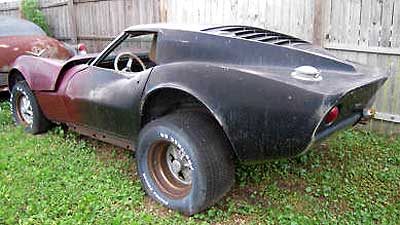
The kit car industry has come a long way since the ‘60s when Meyers-Manx, Fiberfab, Silva, Motion, and others were selling kits. The nature of kits cars is that most are never completed, with electrical issues usually being the number one issue. What it comes down to is that for a kit car to turn out great, you need excellent craftsmen and a fair amount of cash. A fully-functional kit car can be as complicated as a manufactured car.
But time moves on, like it always does. New Corvette designs have come and gone, and styling tastes change. The Mako Shark-II design is now a nitch group, and does this group have PASSION for their Macos! In November 2011 crowds at the MCACN Show in Chicago were WOWed by Motion Supercar collector Dan McMichael’s latest machine, a restored Motion Performance-built, 1970 Maco Corvette. Joel “Mr. Motion” Rosen told me, “You wouldn’t believe how beautiful Dan’s car is!” In a phone conversation, Dan told me, “I really don’t want to add up the receipts. But it’s worth it!” No “buyer’s remorse” there, just red-blooded passion.
But Rosen and McMichaels aren’t the only two that are passionate about Macos. A few posts ago, we shared with you a staggering collection of Maco Corvette photos from Steven Kuryla in California and Robert Egli from Romania. Steven is a retired U.S. Army Intelligence Officer from California and Robert is a big Maco Shark fan from Romania. Steven is in the process of building another Maco Shark.
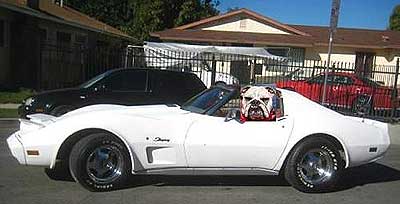
If you have ever considered taking on such a project or wondered what’s involved in building a kit car, we have we got a site for you! Steven has done an astonishing job chronicling the process. I’ll tell you at the outset that the car is about half way to completion, so things still look kind of messy. But, that’s just the nature of this kind of art. I call it “art” because projects such as this require skills beyond spinning wrenches. From start for finish, the process is a series of problems to be solved and creative solutions considered. This is WAY beyond bolting a Meyers-Manx dune buggy body tub on a shortened VW chassis platform.
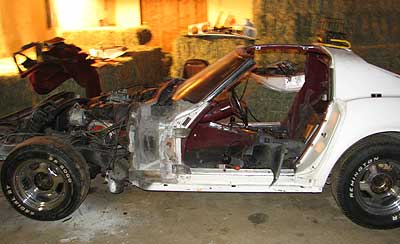
Steven and Robert’s Mako Shark website takes you through the process. The deconstruction phase was especially interesting because it’s very much like an autopsy. As Steve takes the ‘74 donor Corvette apart, everything about the car’s life is revealed – what’s still stock, what’s not, what was jerry-rigged, a few seriously dangerous issues, and about 50-pounds of dirt, debris, and junk came out of the car. You’ll see a 50 year-old design with over 35 years of crud, plus all those nasty, narley, unsexy hardware details such as parking brake mechanisms, old wiring, nasty old body bonding material, plus miscellaneous broken things.
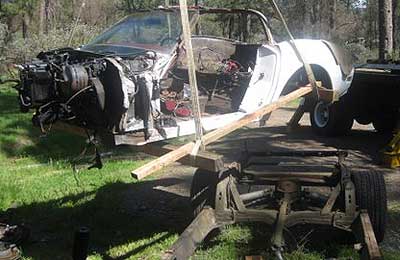
It’s actually a lot of fun to review the images and Steven did an excellent job writing up the process. These kinds of projects take time, so the car isn’t done, and therefore the website isn’t done yet. But we’ll be following Steven’s progress as he updates the site. Spend some time looking over the build photos and you’ll have a whole new respect for completed cars when you see them at car shows.
This is fun stuff, so stay tuned! – Scott
PS – As work progress on this car, we will be posting updates. Go Steve, GO!
Related:
Motion Maco Shark & Silva Maco Shark Gallery
Steven Kuryla and Robert Egli’s Mako Shark website.
Here’s the BEST way to keep up with K. Scott Teeters’ Corvette blog!



